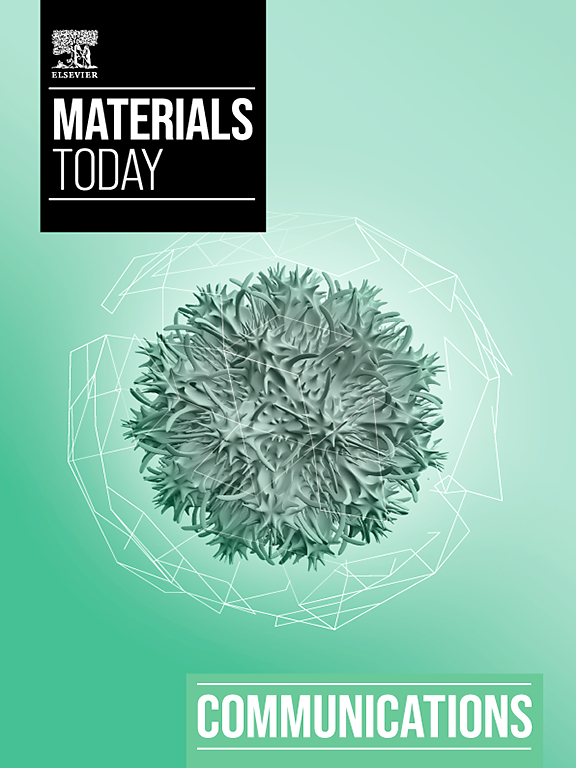基于 3,4-双(3-硝基呋喃-4-基)呋喃并(DNTF)和 4-甲氧基-1-甲基-3,5-二硝基-1 H-吡唑(DMDNP)的熔融载体具有高能量和低灵敏度:共晶设计与脱敏效果
IF 4.5
3区 材料科学
Q2 MATERIALS SCIENCE, MULTIDISCIPLINARY
引用次数: 0
摘要
事实证明,利用不敏感的炸药与 3,4-双(3-硝基呋喃-4-基)呋喃三(DNTF)形成共晶是降低其敏感性和熔点的有效方法。本研究利用相互作用区域指示器(IRI)模拟了 DNTF 和 4-甲氧基-1-甲基-3, 5-二硝基-1 H-吡唑(DMDNP)之间的相互作用,结果表明混合物中的分子间作用力强于单个组分。通过静电喷涂技术制备了不同成分的 DNTF-DMDNP 共熔混合物,并利用差示扫描量热法(DSC)建立了二元相图。根据实验推断,DNTF-DMDNP 共晶的摩尔比为 48.7/51.3,共晶点约为 338.2 K。傅立叶变换红外光谱(FT-IR)和 X 射线衍射(XRD)测试证实,在制备共晶期间没有发生化学反应或晶体转变。共晶在不同加热速率下的热分解温度和表观活化能介于 DNTF 和 DMDNP 之间。在共熔混合物中,即使仅添加 10% 的 DMDNP 也会显著降低机械灵敏度,使摩擦灵敏度从 100% 迅速降至 12%。与纯 DNTF 相比,DNTF-DMDNP 共晶在 8.47 km s 处测得的引爆速度仅轻微降低了约 0.78 km s(8.4%),这表明通过加入 DMDNP,可以有效地脱敏,同时将能量损失的可能性降至最低。此外,调整成分可控制由 DNTF-DMDNP 组成的熔铸炸药的引爆性能和灵敏度。本文章由计算机程序翻译,如有差异,请以英文原文为准。
3, 4-Bis (3-nitrofurazan-4-yl) furoxan (DNTF) and 4-methoxy-1-methyl-3, 5-dinitro-1 H-pyrazole (DMDNP) based molten carrier with high energy and low sensitivity: Eutectic design and desensitization effect
Utilizing insensitive explosives to form a eutectic with 3, 4-bis (3-nitrofurazan-4-yl) furoxan (DNTF) proved to be an effective method for reducing its sensitivity and melting point. In this study, the interaction between DNTF and 4-methoxy-1-methyl-3, 5-dinitro-1 H-pyrazole (DMDNP) was simulated using the interaction region indicator (IRI), revealing that the intermolecular forces in the mixture are stronger than those of the individual components. Co-molten mixtures of DNTF-DMDNP with varying compositions were prepared through electrostatic spraying technology, and a binary phase diagram was established using differential scanning calorimetry (DSC). The experimentally extrapolated molar ratio of the DNTF-DMDNP eutectic was determined to be 48.7/51.3, with a eutectic point at approximately 338.2 K. Fourier transform infrared spectroscopy FT-IR) and X-ray diffraction (XRD) tests confirmed that no chemical reactions or crystal transformations occurred during the preparation of the eutectic. The thermal decomposition temperatures at different heating rates and apparent activation energy of the eutectic fell within the range between those of DNTF and DMDNP. Addition of even just 10 % DMDNP significantly reduced mechanical sensitivity in co-molten mixtures, resulting in a rapid decrease from 100 % to 12 % friction sensitivity. The detonation velocity of the DNTF-DMDNP eutectic measured at 8.47 km s only experienced a slight decrease by about 0.78 km s (8.4 %) compared to pure DNTF, indicating efficient desensitization by incorporating DMDNP with minimal energy loss potentiality. Furthermore, adjusting composition allowed for control over detonation performance and sensitivity in melt-cast explosives composed of DNTF-DMDNP.
求助全文
通过发布文献求助,成功后即可免费获取论文全文。
去求助
来源期刊

Materials Today Communications
Materials Science-General Materials Science
CiteScore
5.20
自引率
5.30%
发文量
1783
审稿时长
51 days
期刊介绍:
Materials Today Communications is a primary research journal covering all areas of materials science. The journal offers the materials community an innovative, efficient and flexible route for the publication of original research which has not found the right home on first submission.
 求助内容:
求助内容: 应助结果提醒方式:
应助结果提醒方式:


